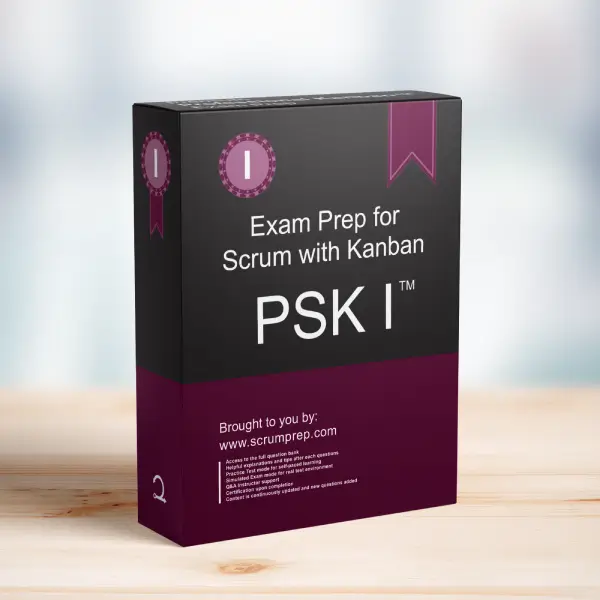Feedback Loops in Kanban and Scrum
Understanding the role of feedback loops in Kanban and their relationship with Scrum practices is essential for effective workflow management.
Exam Question
Some Kanban implementations prescribe the practice of implementing feedback loops. The Kanban Guide for Scrum Teams does not include that practice. Why?
(choose the best answer)
A. There are five feedback loops in Scrum. The Kanban Guide for Scrum Teams builds upon the Scrum Guide. There is no need to explicitly add that practice.
B. There is no need to implement feedback loops in Kanban. Feedback loops only apply at the enterprise level.
C. A Scrum Team must devise and design their own feedback loops through an inspection and adaptation process.
D. Kanban boards may act as a feedback loop in a Scrum with Kanban environment.
Correct Answer
A. There are five feedback loops in Scrum. The Kanban Guide for Scrum Teams builds upon the Scrum Guide. There is no need to explicitly add that practice.
Explanation
Correct Answer
A. There are five feedback loops in Scrum. The Kanban Guide for Scrum Teams builds upon the Scrum Guide. There is no need to explicitly add that practice:
Scrum inherently includes five key events (Sprint, Sprint Planning, Daily Scrum, Sprint Review, and Sprint Retrospective) that serve as feedback loops. The Kanban Guide for Scrum Teams builds upon these existing practices, making it unnecessary to explicitly add additional feedback loops within the Kanban framework for Scrum Teams. These events provide regular opportunities for inspection and adaptation, ensuring continuous improvement and alignment with goals.
Why the Other Options Are Less Effective
B. There is no need to implement feedback loops in Kanban. Feedback loops only apply at the enterprise level:
This statement is incorrect. Feedback loops are crucial at all levels, not just at the enterprise level. They help teams continuously improve their processes and outcomes.
C. A Scrum Team must devise and design their own feedback loops through an inspection and adaptation process:
While Scrum Teams do engage in inspection and adaptation, the five events in Scrum already provide structured feedback loops. Teams do not need to design additional loops; they utilize the existing Scrum events.
D. Kanban boards may act as a feedback loop in a Scrum with Kanban environment:
Kanban boards provide visualization and can offer insights into workflow, but they do not replace the structured feedback loops provided by the Scrum events. They complement these feedback loops by offering real-time data and visibility.
Importance of Feedback Loops in Scrum and Kanban
- Continuous Improvement: Feedback loops facilitate regular assessment and adjustment, enabling teams to improve continuously.
- Transparency: Regular events ensure that progress and issues are visible to all team members and stakeholders.
- Adaptability: Feedback loops help teams adapt their plans and processes based on new information and changing circumstances.
Effective Practices for Utilizing Feedback Loops
- Regular Events: Participate actively in the five Scrum events to ensure continuous feedback and improvement.
- Utilize Visualization: Use Kanban boards to complement feedback loops by providing real-time visibility into workflow and progress.
- Focus on Improvement: Use feedback from these loops to identify areas for improvement and implement changes promptly.
Relevance to the PSK I Exam
Understanding how feedback loops are integrated into Scrum and how Kanban practices build upon these loops is crucial for the PSK I exam. It demonstrates knowledge of continuous improvement and effective workflow management.
Key Takeaways
- Scrum inherently includes five feedback loops through its key events, which the Kanban Guide for Scrum Teams builds upon.
- Feedback loops are essential for continuous improvement, transparency, and adaptability.
- Utilizing both Scrum events and Kanban visualization tools ensures effective workflow management and ongoing improvement.
Conclusion
The Kanban Guide for Scrum Teams does not explicitly add feedback loops because Scrum already includes them through its five key events. These events provide the necessary structure for continuous feedback and improvement. For more information on preparing for the PSK I exam, visit our Professional Kanban PSK I™ Exam Prep.



